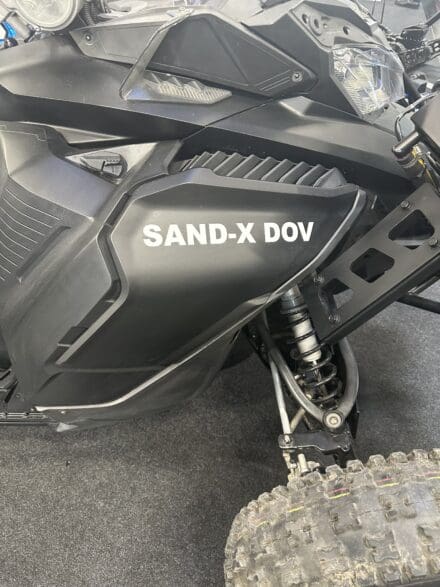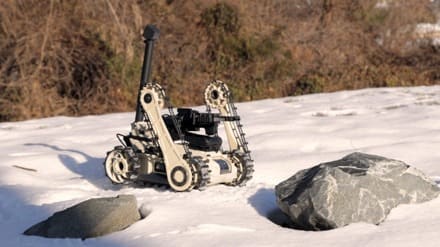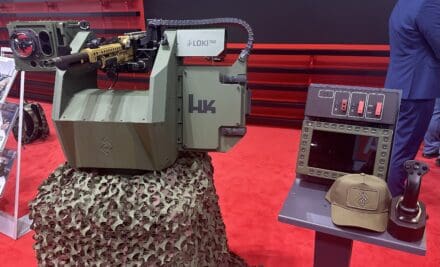SUNNYVALE, Calif., April 16, 2025 — Scout AI Inc. (“Scout”) today announced its emergence from stealth mode with a bold mission: to build the AGI brain for defense robotics. The company also unveiled an oversubscribed $15 million seed round led by Align Ventures and Booz Allen Ventures, and revealed it has been selected for multiple Department of Defense (DoD) contracts.

Founded in August 2024 by Colby Adcock and Collin Otis, Scout brings together deep experience at the intersection of AI, robotics, and defense. CEO Colby Adcock is a former tech private equity executive and current board member at humanoid robotics company Figure AI. CTO Collin Otis is a serial entrepreneur who previously was a founding engineer and Director of Autonomy and AI at Kodiak Robotics and Head of Data Science and Chief of Staff at Uber ATG. He has built autonomy systems from the ground up for both commercial and military platforms and previously sold a venture-backed startup to Target.
At the core of Scout’s breakthrough is Fury, a defense-specific Vision-Language-Action (VLA) foundation model engineered to transform every defense robot into an intelligent, autonomous agent. Unlike traditional robotics software, Fury is an embodied AI system — capable of perceiving the physical world, interpreting natural language, and issuing real-time motor commands to act decisively even in communication and GPS-denied environments.
“Achieving warfighter-level versatility in robotic systems requires grounding AI in physical reality,” said Otis. “By training our system on human-level behavior we make our AI embodied. Fury develops the kind of intelligence warfighters naturally have — situational, physical, and adaptive.”
What sets Fury apart from conventional language models is its ability to perceive, reason, and act across multiple modalities. It doesn’t just output text — it commands machines. Trained on large-scale real-world data, Fury brings multimodal reasoning and precision control to a wide spectrum of uncrewed systems: ground, air, sea, and space. It can be directed via natural language or fine-tuned for specific mission profiles, delivering human-like autonomy at machine scale.
Scout’s first two prototypes — the G01 unmanned ground vehicle and A01 unmanned aerial vehicle — are already operating autonomously powered by Fury at the company’s proving grounds in the Santa Cruz Mountains.
“Physical AI is the most decisive military advantage of the century,” said Adcock. “Our vision is one warfighter commanding many robots — seamlessly integrated into a unified team. That level of human-machine integration requires an AI brain like Fury that understands commander intent and can think, move, and collaborate like seasoned operators. That’s how we achieve true force multiplication.”
Scout is proudly planting its flag in Silicon Valley, building its team in Sunnyvale and pulling top AI and autonomy talent from the self-driving, big tech, and defense worlds to tackle this critical mission. “We’re bringing in the world’s best engineers to work on the world’s most important frontier — making sure this AI is built securely and responsibly for the good guys,” said Adcock. “Our adversaries are already building it. We must develop this technology and outpace them — and ensure the U.S. leads the future of intelligent defense systems.”
Scout is also taking a partnership-driven approach. Its Fury system is designed to be lightweight, modular, and hardware-agnostic — running on as little as a single commercial off-the-shelf camera and low-power inference chip, enabling rapid integration into existing and emerging robotic hardware systems. A growing list of robotics companies are partnering with Scout to embed Fury into their platforms, unlocking advanced autonomy without overhauling their hardware. Industry partners looking to learn more can reach out directly via partnerships@scoutco.ai.
“Our system is designed to make existing platforms intelligent, and we’re excited to be working with partners across the defense ecosystem to bring that capability to scale,” noted Otis.
Scout closed on its $15 million seed round, led by Align Ventures and Booz Allen Ventures, with participation from Draper Associates, Decisive Point Ventures, Perot Jain, Sigmas Group, Evolution VC, BVVC, Habitat Partners, Piedmont Capital Investments, FJ Labs, Revelry Venture Partners, Monte Carlo Capital, Expansion VC, and Gaingels.
To learn more, visit scoutco.ai.





























































































































